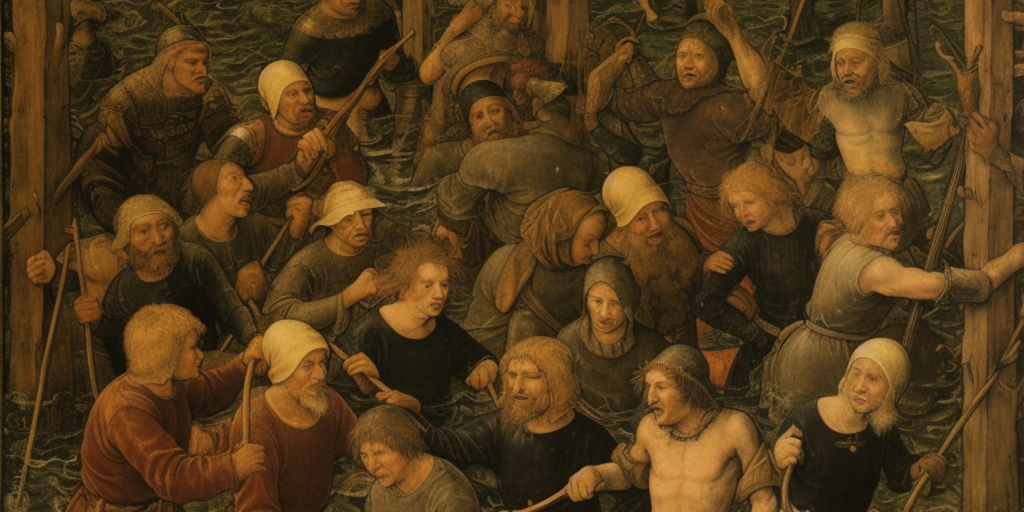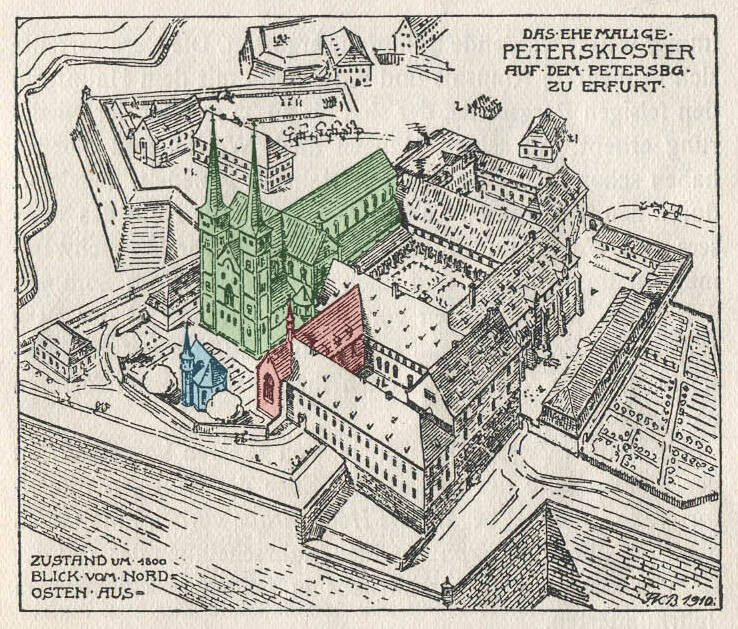Even the most well-intentioned deed can go awry, but not many go off the rails quite as much as the meeting put together by King Henry VI in July 1184.
Henry had organized the meeting, called a Hoftag, to help broker peace between two other leaders, Louis III of Thuringia and Archbishop Conrad of Mainz. Whether he would have resolved the feud between the two is unknown, because something much worse than a meeting gone wrong occurred.
A deadly combination of poor infrastructure, overcrowding, and a lack of proper waste management would end up with 100 or more nobles swimming in literal excrement. This travesty, called the Erfurt latrine disaster, would dwarf whatever feud brought the nobles together in the first place.
So what exactly caused the Erfurt latrine disaster?

The Setting of the Erfurt Latrine Disaster: Medieval Erfurt
Many medieval cities were poorly constructed and filthy. However, Erfurt more closely resembled a modern city even in 1184.
It featured cobblestone streets, timber-framed houses, and the enormous, looming Erfurt Cathedral. It was considered a center of commerce as well as a hub of cultural and religious activity.
As posh and modern as Erfurt appeared, it suffered from a problem that even the largest medieval cities struggled with: sanitation and waste management. Modern plumbing was still hundreds of years away.
Erfurt did what every other city did to deal with the never-ending flow of human waste–they used a latrine system.

The Latrine System of Erfurt
Waste disposal wasn’t really a thing in medieval Europe. Instead, it was an out-of-sight, out-of-mind situation.
In order to deal with human waste, huge pits were dug beneath structures. Waste would drop directly from the toilet into the pits, also known as cesspools or latrine cesspits.
The biggest downside of these pits was that they had to be emptied by hand. If this wasn’t possible, the cesspools full of human waste were simply boarded over and abandoned.
The people of the medieval world had no concepts of bacteria, viruses, or germ theory. Therefore, there was no way for them to understand the risk this posed to their health via the waste making it into their drinking water.
Cities bordering rivers, like Erfurt, had an advantage in that they would build their latrines to connect to the river. This allowed the water to take the waste with it downstream.
If a river wasn’t present, the waste would simply sit in the pit, slowly decomposing and seeping to the ground. Either way, it would eventually make it into the water table. This would increase illness, unbeknownst to the people of the time.
It wasn’t illnesses that became such a problem with the Erfurt latrines, though. Instead, the combination of river water and human waste soaking into the wooden structure of the cesspit slowly weakened it.
At the same time, the river was constantly washing away the riverbank. This made the ground less and less steady with each passing day.
Henry VI held his Hoftag at the Erfurt, or Petersburg Cathedral. Since the cathedral latrine system dumped into the Gera River, it was being weakened at all times by exposure to moisture.
The population of Erfurt was experiencing an increase at the time. The extra human waste also worked to damage the latrine structure. The Erfurt latrine system just wasn’t built to handle so many people all at once.
The Erfurt Latrine Disaster of 1184
On the day of the disaster, a large number of nobles gathered to attend the meeting. Henry VI had sent invitations to all of the nobles of the Holy Roman Empire to attend the meeting. Many of them answered the summons.
The large crowd of nobility gathered on the second floor of the cathedral and waited for the meeting to begin. Little did they know that there would be no meeting. Instead, many of them would be fighting for their lives in just a matter of minutes.
Just as the meeting began, the wooden floor of the cathedral collapsed. It dumped all of those gathered through two floors and into the cesspool below.

The latrine system for the cathedral was enormous, allowing it to last much longer before needing to be emptied. The depth of it ascertained that the amount of human waste was deeper than the height of a man because as soon as they hit the wastewater, many of the nobles found themselves unable to keep their heads above the waste.
The death toll of the disaster ranges between 60 and 100 people. Causes of death were attributed to drowning, the trauma of the fall right after the collapse, being hit by falling debris, or suffocating on the fumes coming from decaying human waste.
Aftermath of the Disaster
In a strange twist of fate, all three of the men involved in the creation of the meeting that led to the disaster survived. King Henry VI managed to avoid plunging into the excrement because he was seated in a stone alcove that was spared during the collapse of the wooden structure.
Even so, he had to be rescued with a ladder.
The king had apparently had quite enough of Erfurt by that point and left hastily after his rescue. The archbishop had been seated with the king and therefore also avoided the plunge into the latrine pit.
Louis III of Thuringia was not so lucky. He went down into the depths of the filth along with all of the other nobles. His luck did return when he was rescued and didn’t become one of the unfortunate souls to lose their lives in the Erfurt latrine disaster.
As expected, the feud that the nobles had originally gathered for went unresolved. But it’s safe to say that it was no longer at the forefront of the survivor’s minds. King Henry VI went on to greatness, eventually becoming the Holy Roman Emperor.
References
“Chronicle of St. Peter in Erfurt”
“Erfurt Latrine Fall”
https://www.br.de/radio/bayern2/sendungen/kalenderblatt/2607-latrinensturz100.html

